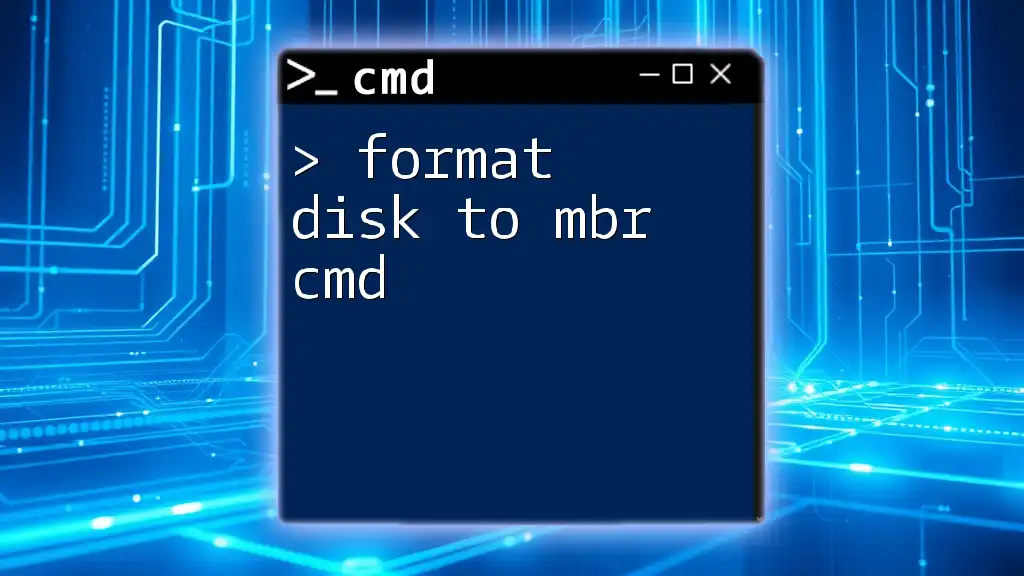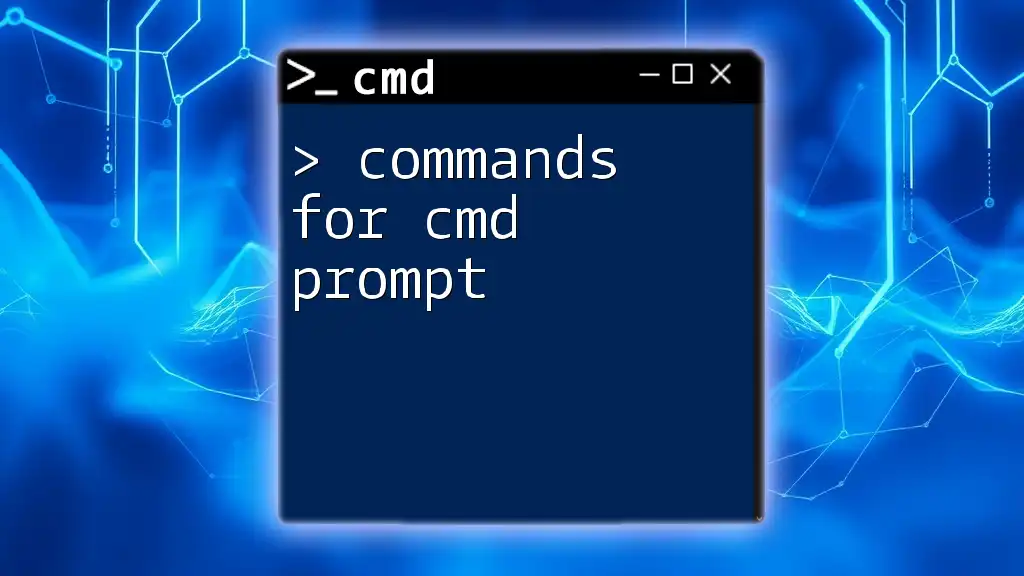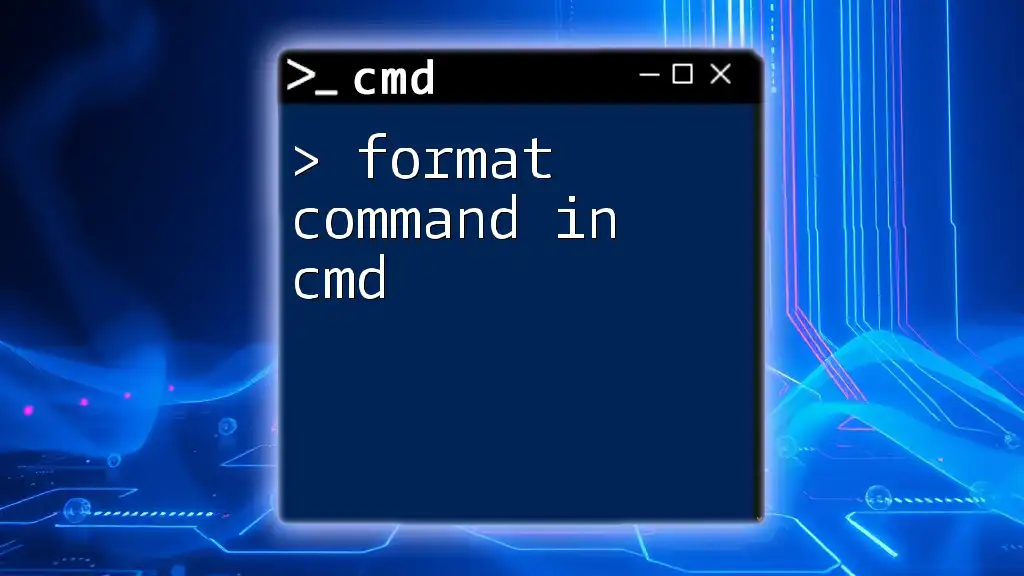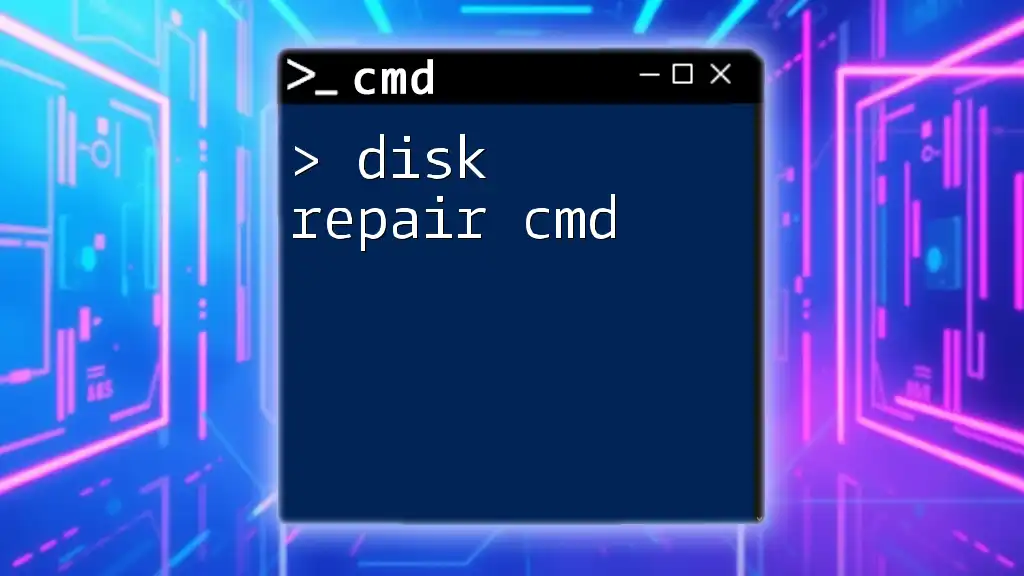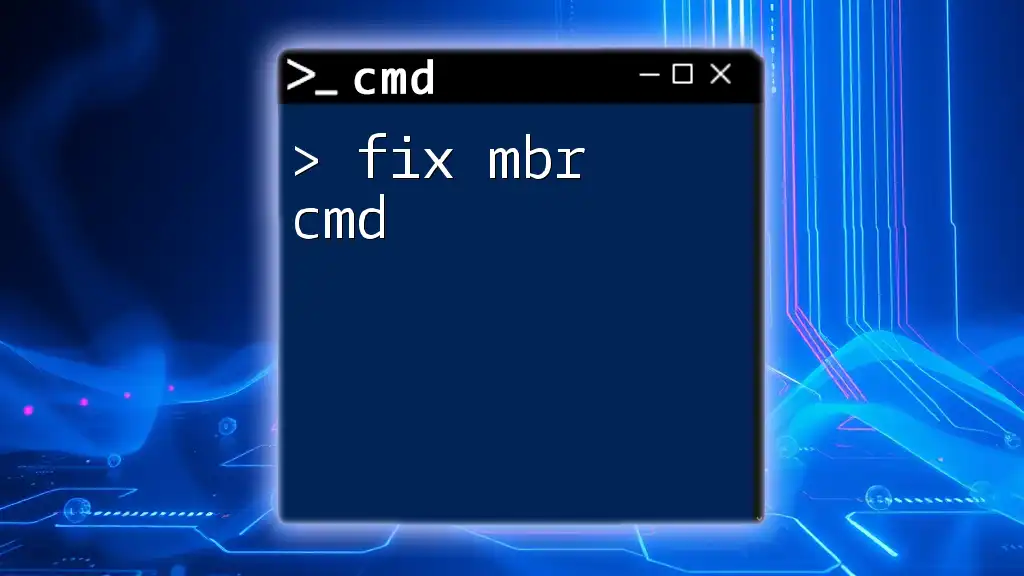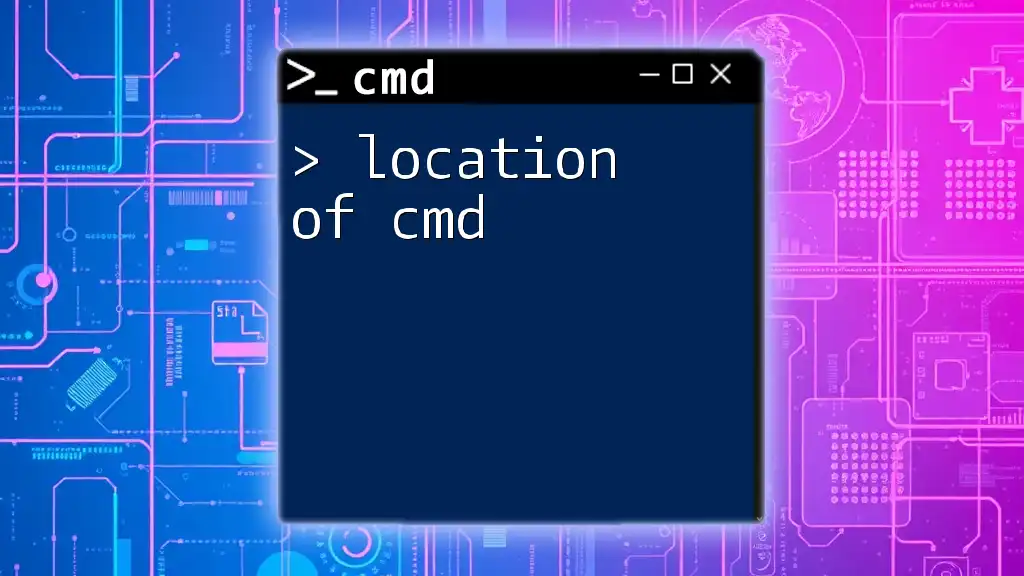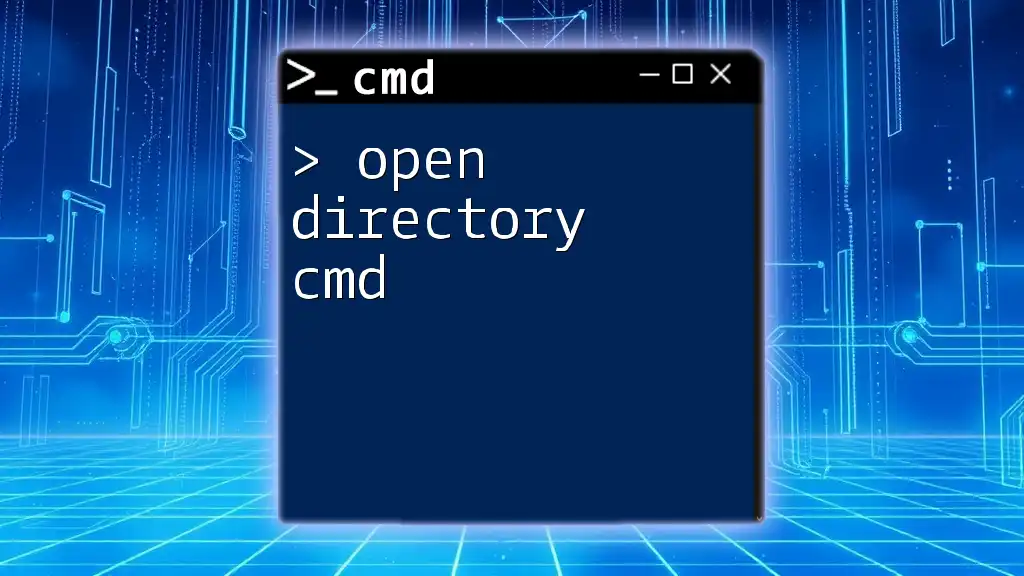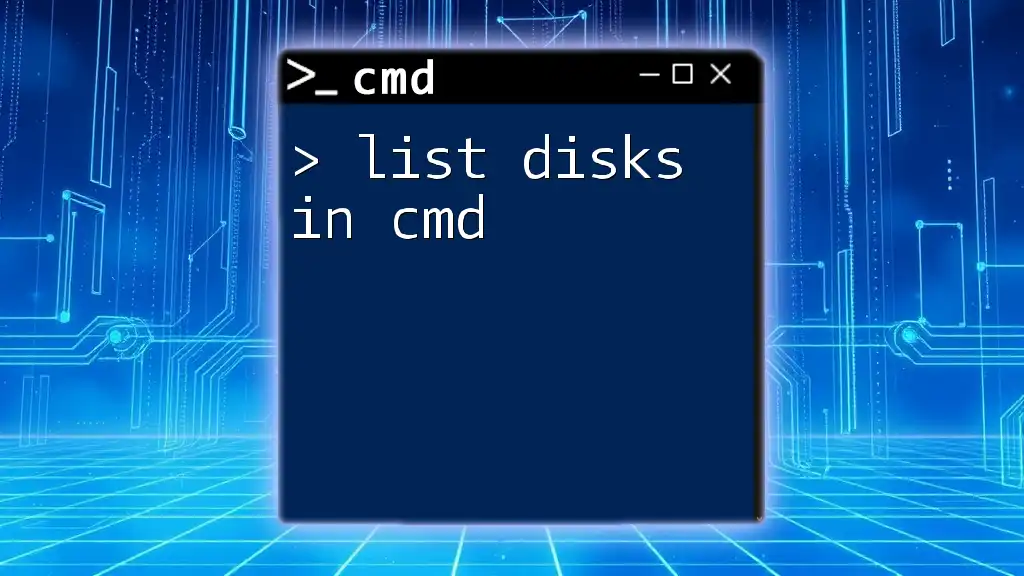To format a disk to MBR using the Command Prompt, you can use the `diskpart` utility to select the disk and convert it to MBR with the following commands:
diskpart
list disk
select disk <disk_number>
clean
convert mbr
Replace `<disk_number>` with the number of the disk you want to format.
Understanding Disk Formats
What is MBR?
The Master Boot Record (MBR) is a partitioning scheme used to define the boundaries of data on storage devices like hard drives and SSDs. It consists of a small segment of data located at the beginning of a disk. MBR supports partitioning configurations and contains information regarding the layout of the disk – essentially telling the operating system how to load the operating system or partition from the drive.
Limitations of MBR:
- MBR supports a maximum disk size of 2 TB.
- It allows a maximum of four primary partitions or three primary partitions and one extended partition.
Benefits of MBR
There are certain advantages to utilizing MBR:
- Compatibility: MBR is widely supported across many operating systems, making it a fitting option for users with older systems.
- Simplicity: Its straightforward structure allows for easier disk management, especially for novice users.
When to Choose MBR Over GPT
While MBR has its downsides, there are scenarios when it might be the better option:
- If you're using legacy BIOS systems that do not support GPT.
- If you need to run software that requires MBR partitions.
- If the hard drive is smaller than 2 TB, where MBR suffices without limitation concerns.
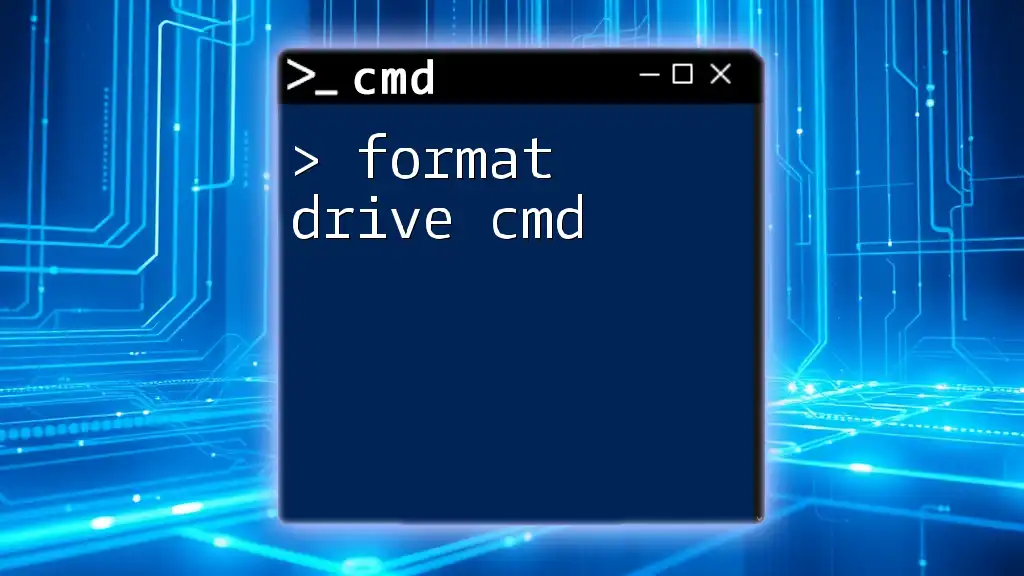
Preparing for the Disk Formatting
Prerequisites
Before you initiate the formatting process, it's crucial to take some important precautions:
- Data Backup: Always back up any important data to avoid loss during the formatting process.
- Correct Disk Identification: Ensure you identify the correct disk to prevent any unintentional data erasure.
Tools Required
To format a disk to MBR using CMD, you’ll need:
- Windows Command Prompt (CMD): A built-in Windows application that allows you to execute commands.
- Administrative Privileges: The process requires elevated permissions to modify disk configurations.
Identifying Your Disk
Knowing which disk you plan to format is vital. You can display a list of available disks using:
diskpart
This command launches the DiskPart utility. To view all connected disks, enter:
list disk
This command will display a list of all disks connected to your system, including their sizes, making it easy to identify the correct one.

Formatting Disk to MBR Using CMD
Step-by-Step Guide
Step 1: Open Command Prompt
To begin the formatting process, open the Command Prompt as an administrator. You can do this by searching for “CMD” in the Start menu, right-clicking it, and selecting “Run as administrator.”
Step 2: Launch DiskPart
After opening Command Prompt, type the following command to launch DiskPart:
diskpart
Upon executing this command, you will enter the DiskPart environment where you can manage disks.
Step 3: List Available Disks
Now that you are in DiskPart, check the disks available on your system:
list disk
This command displays all connected disks. Identify and note the disk number you wish to format.
Step 4: Select the Target Disk
To proceed with formatting, select the appropriate disk with:
select disk X
(Replace X with the number of the disk you identified in the previous step.)
Step 5: Clean the Disk
Before formatting, you must clear existing partitions and data. Use the following command:
clean
This command removes all data from the selected disk, so ensure you have backed up any critical files beforehand.
Step 6: Convert Disk to MBR
To convert the cleaned disk to MBR format, execute:
convert mbr
After running this command, your disk is now ready to be partitioned in the MBR scheme.
Step 7: Create a New Partition
To create a primary partition on the disk, use:
create partition primary
This command creates a primary partition that utilizes the available disk space.
Step 8: Format the Partition
Next, format the new partition to prepare it for storing data. You can quickly format it using:
format fs=ntfs quick
The “quick” execution speeds up the formatting process by skipping some checks.
Step 9: Assign a Drive Letter
Finally, assign a drive letter to the new partition for easy access:
assign letter=X
(Replace X with your desired drive letter.)
Verifying the Format
To ensure the disk has been properly formatted and assigned a letter, you can check the available volumes with:
list volume
This command will display the current volumes and their status.
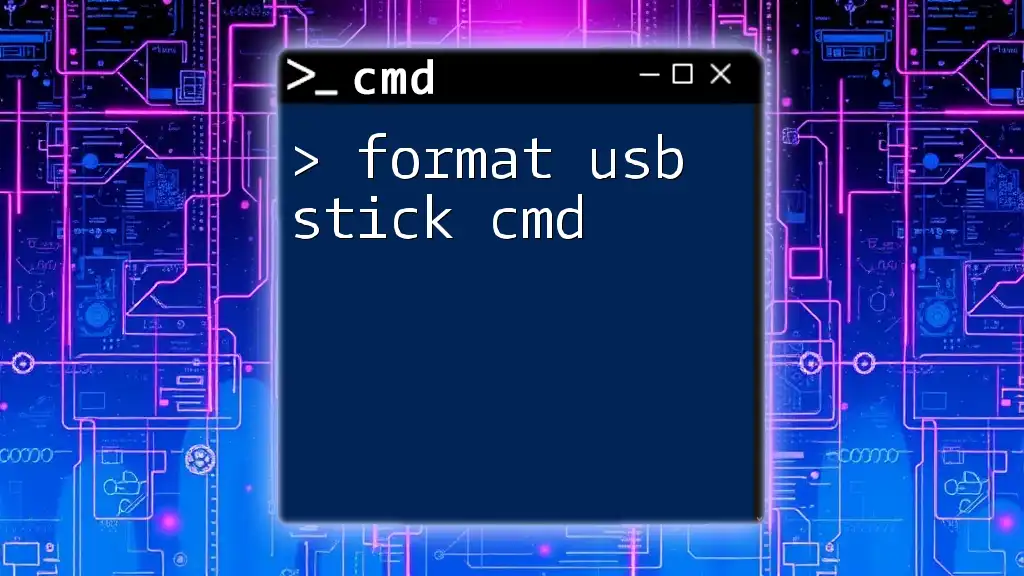
Troubleshooting Common Issues
Access Denied Errors
If you encounter access denied errors during the formatting process, double-check that you have administrative privileges. You can also ensure you are not trying to format a drive currently in use or protected.
Wrong Disk Selected
It's critical to double-check which disk you have selected before issuing the `clean` or `format` commands. Accidental formatting of the wrong disk can lead to significant data loss.
Failed Formatting
Several reasons may lead to a formatting failure, such as:
- The disk being in use.
- An improper connection.
- Hardware issues with the drive itself.
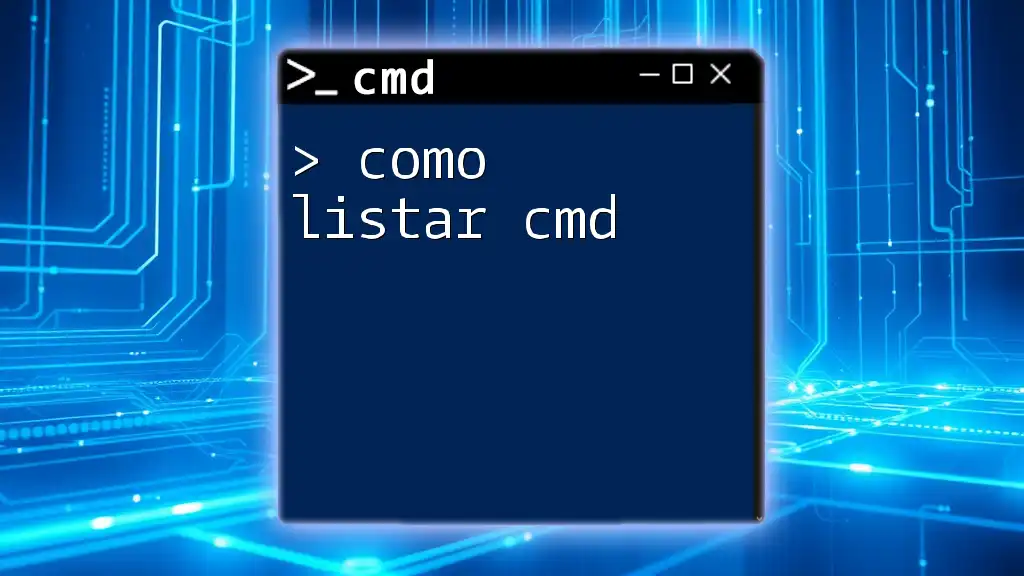
Conclusion
Knowing how to format a disk to MBR using CMD is an essential skill that can help you manage your storage devices more effectively. Mastering these commands provides you with a powerful tool for configuring and maintaining your system.
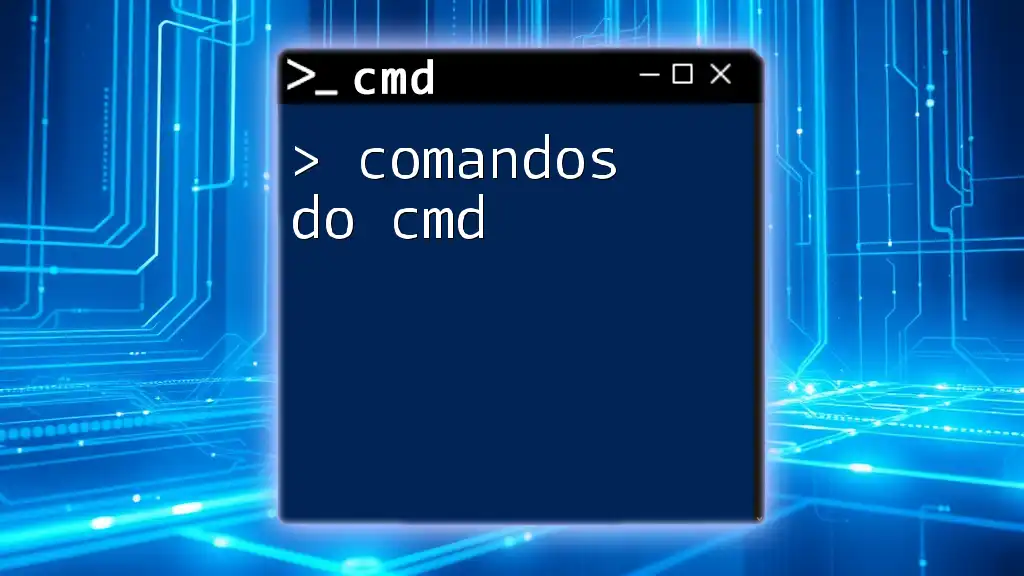
Additional Resources
To deepen your knowledge and understanding of CMD commands, consider exploring Microsoft’s official documentation or forums dedicated to CMD tutorials.
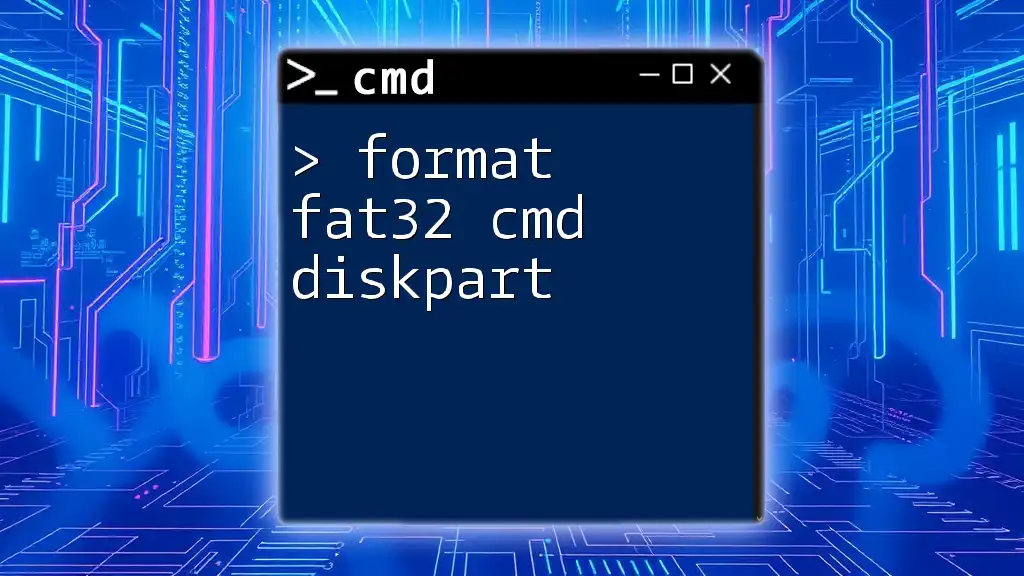
Call to Action
Embrace the power of the Command Prompt! Start experimenting with CMD commands today, and don't hesitate to subscribe for more insightful tutorials and resources on mastering CMD functionalities.

